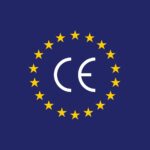
CE mark is a kind of compliance mark for placing your product in EU market. It opens the doors for all the 28 major countries of EU for the device and also symbolizes the highest level of product quality. One question that frequently confuses people is that: ‘Is it an EC Certification or a CE Certification? The answer to this is that there is no difference between the two. The correct name for the certificate is ‘EC Certificate’. They are commonly referred to as ‘CE Certificates’ because of the symbol that is used on the products.
There are many steps involved in obtaining the CE mark. The first step is the defining the intended use of the device according to which is classification: KBIs are classified based on the level of risk they pose to patients. This classification determines the conformity assessment procedure that must be followed.
Conformity Assessment
The conformity assessment procedure involves a series of tests and evaluations to ensure the medical device meets the essential requirements set out in the EU MDR. This may include a technical file review, clinical evaluation, and testing of the device.
Technical Documentation
The manufacturer must create technical documentation that includes information on the device’s design, intended use, and performance. This documentation must be available to the appropriate authorities upon request.
Notified Body
The manufacturer must engage a notified body, which is an independent organization designated by the EU to assess the conformity of medical devices to the EU MDR. The notified body will review the technical documentation and conduct an assessment of the device.
Declaration of Conformity
Once the medical device has successfully passed the conformity assessment procedure, the manufacturer must issue a declaration of conformity, indicating that the device meets the requirements of the EU MDR.
CE Marking
The CE marking is then affixed to the medical device, indicating that it complies with the EU MDR and is eligible for sale in the European Union. It’s important to note that the EU MDR has stricter requirements than the previous directive, and many medical device manufacturers may need to undergo additional testing and evaluations to ensure compliance. for both self certification case and other certification a technical dossier is prepared for the product.
This technical dossier contains all the information about the product from the raw material to test performed on the product, risk analysis, ESR, declaration of conformity, manufacturing process description etc. Once this file is approved by the NB then the onsite audit of the organization is done to ensure the things are actually at place as described in the technical dossier. The organization may or may not receive non conformity (NCs) during the audits. The major NC’s needs to be resolved within one month where as the minor can be resolved in 2-3 months. Once all NC’s are cleared the organization is finally issued the CE certification having a validity of 5 years subjected to surveillance every year.
While the process of CE is not very easy but the proper consultancy and guidance can help an organization to obtain CE smoothly. KBI provides consultancy for CE marking. We are in this field from the last 5 years and our organization is one stop solution for all the process & procedures related to the CE certification .We have our association with the Notified bodies in Europe and highly qualified approved auditor having the in depth knowledge of CE mark. Right from the product classification to preparation of technical dossier, conducting audit for compliance and providing the certificate we have gain our expertise in all the fields.
OUR CONSULTING SERVICES INCLUDES THE BELOW AREAS:
- Consultancy
- European Authorized Representative / EU Responsible Person
- Technical File Creation / Review
- Product Registration
- National Device Registration
- Vigilance
- Regulatory Updates
- Product Classification
- Validation
- Free Sales Certificates
- Essential Requirements Checklist
- Identification of Harmonized Standards
- Clinical Evidence / Clinical Evaluation Report
- Risk Management
- Training
